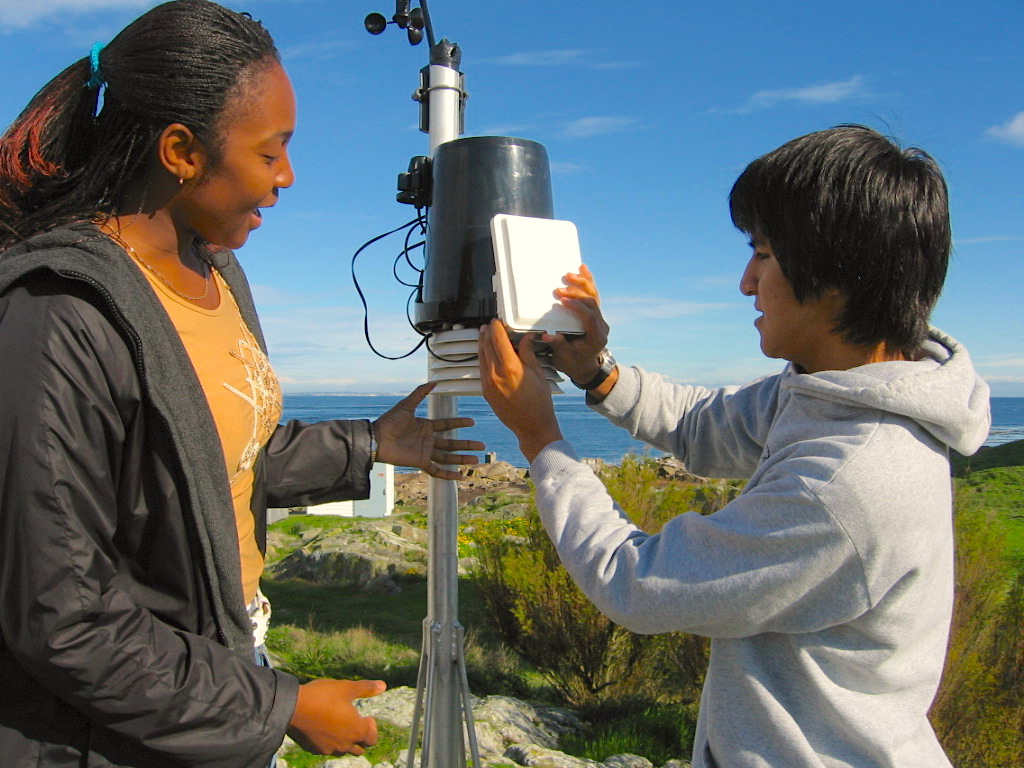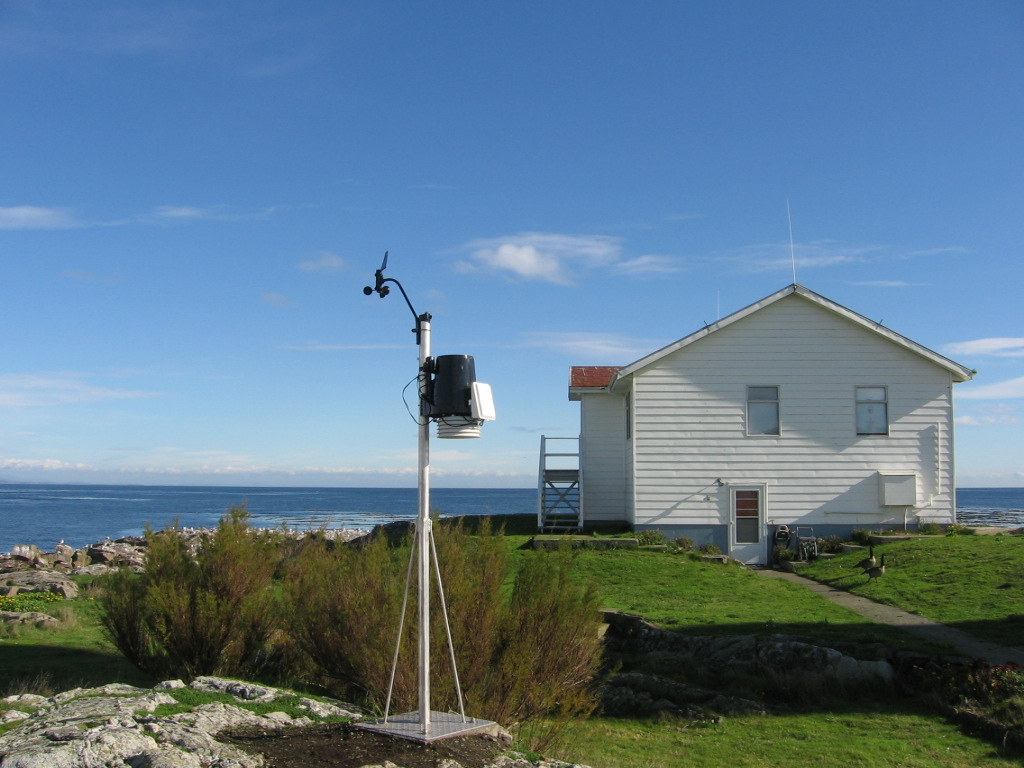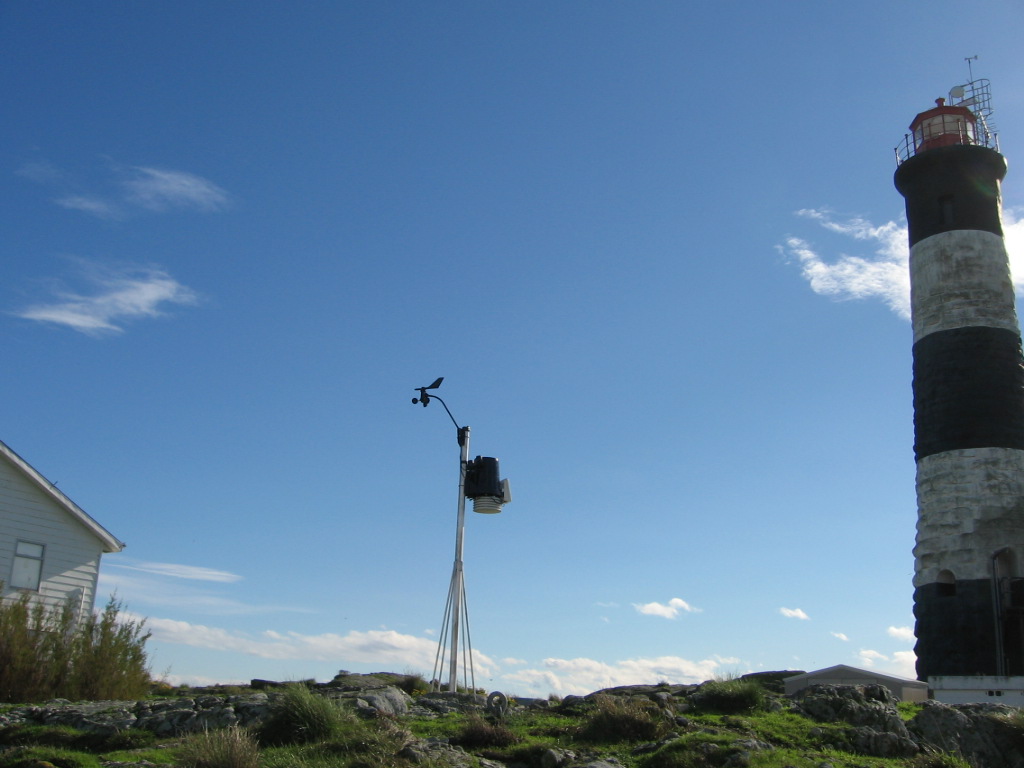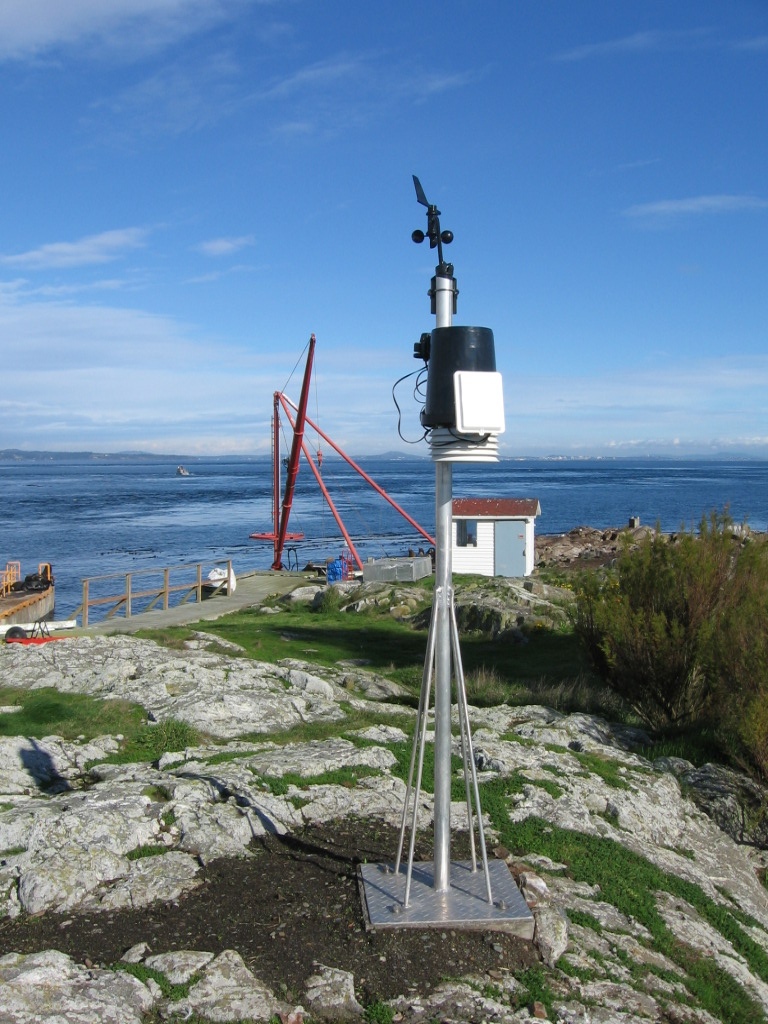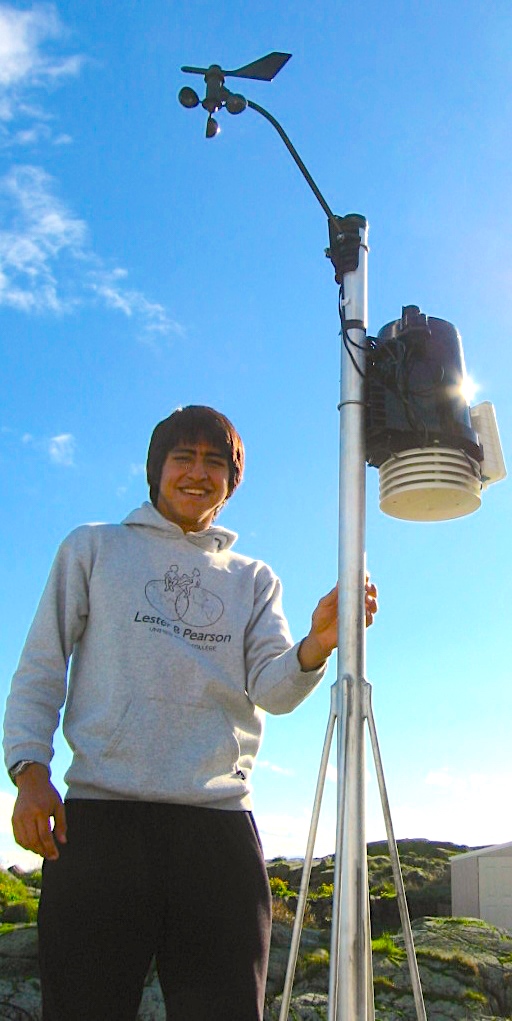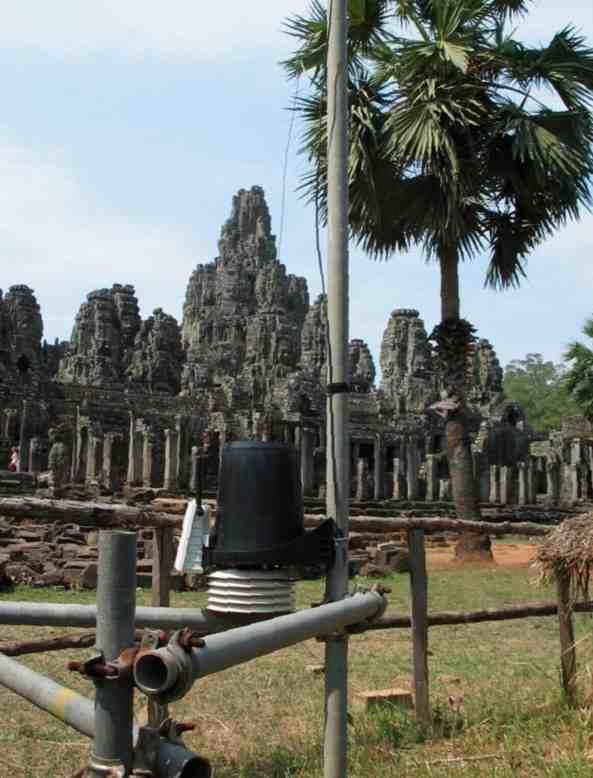-
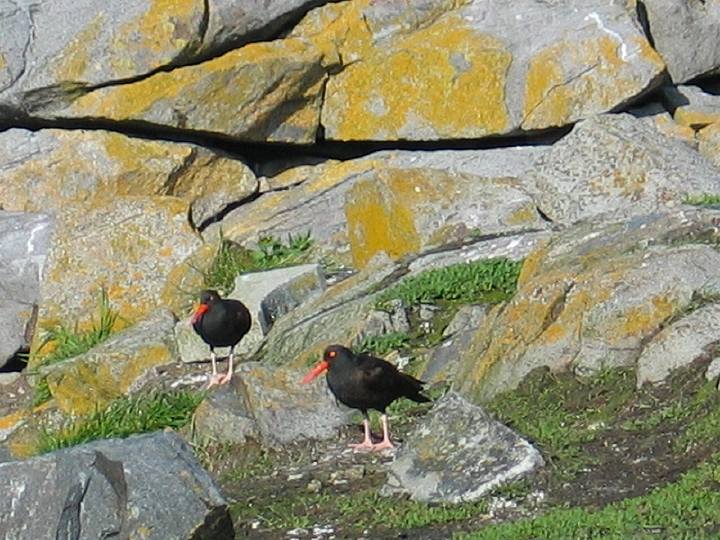
-
On the North side of the island, the spray zone is also used as a habitat by the Black Oystercatchers
-
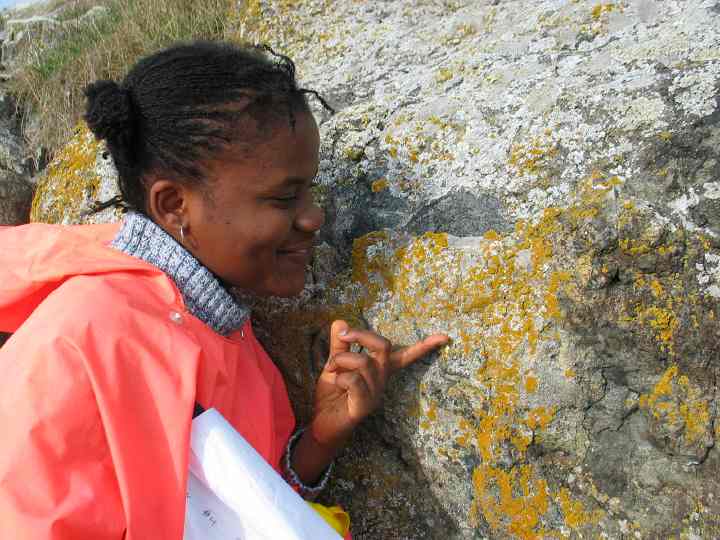
-
Here Imani is examining some Xanthoria in the high spray zone of Race Rocks near the boathouse
-
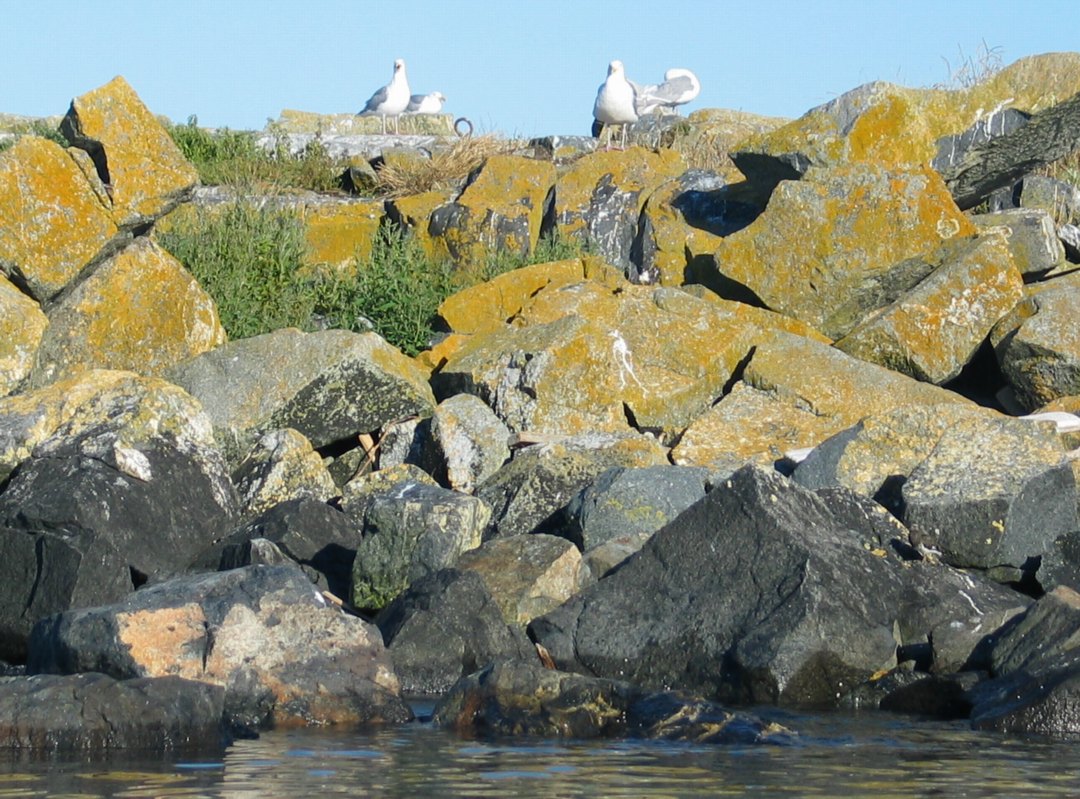
Caloplaca sp.
A symbiotic phenotype of lichen-forming fungi. The lichen observed here is thought to be a combination of Caloplaca flavogranulosa and/or C. citrina
Appearance: The tissue of this species is yellow-orange and often found in small yellow patches (colonies), and it is difficult to discern separate individuals. It has a very brittle appearance. In general, colonies may form a distinct narrow band on rocks and walls just above high water level, so that they are moistened by the water.
The body has a checkered cracked look with a finely frayed, whitish or pale yellow edge that is composed of the lichens (fungal) hyphae. The fruiting structure has a dark orange disc that is surrounded by a lighter edge.
Structure:
Structure of the common which grows on many types of surface, including concrete, roofs of buildings, and rocks subjected to sea spray. The orange colour of this lichen is due to production of the pigment parietin at the lichen surface.
Habitat:
They grow is soiless habitats such as on rocks, on trees, on walls, or on poorly developed soils. Although found in all biomes, lichens are particularly abundant in high altitudes like the Sub-Antarctic, the Arctic, the Antarctic.
In this observation it was found that the species was very high up on the rocks of the island. They were found in vast patches, at a position where the waves only reach as surf spray..
This lichen can build small yellow patches amongst the darker belts of salt lichen nearer to the shoreline, but is more common higher up and can build widespread yellow-orange colonies on the shorelines middle zone. Orange lichen is perennial and colonies grow slowly.
-Common on nutrient rich areas such as beneath bird perching areas.
-appears in areas that have limited water spray , and salt concentration is high.
Niche:
The lichen is a photosynthetic organism. Lichens are remarkable for their ability to withstand prolonged drying and to resume activity rapidly after re-wetting. Most lichens that contain green algae can recover from drought by absorbing water from humid air and then begin to photosynthesise. In this habitat there are not many grazers on lichen.
Limiting Factors:
-excess amounts of water, oil spills, or coverage by animal (bird, sea lion) faeces may lessen rate of photosynthesis
-trampling, erosion by water spray, may kill some of the population
References:
Natural Resource Conservation Service,
http://plants.usda.gov/cgi_bin/topics.cgi?earl=plant_profile.cgi&symbol=XANTH9, Information last updated: 12/07/2002
Domain Eukarya
Kingdom Fungi
Division Ascomycota
Class Lecanoromycetes
Order Teloschistales
Family Teloschistaceae
Genus Caloplaca
species sp
Common Name Lichen ?
 The Race Rocks taxonomy is a collaborative venture originally started with the Biology and Environmental Systems students of Lester Pearson College UWC. It now also has contributions added by Faculty, Staff, Volunteers and Observers on the remote control webcams. Dec 2005- Imani Brown PC yr 31 The Race Rocks taxonomy is a collaborative venture originally started with the Biology and Environmental Systems students of Lester Pearson College UWC. It now also has contributions added by Faculty, Staff, Volunteers and Observers on the remote control webcams. Dec 2005- Imani Brown PC yr 31
|





